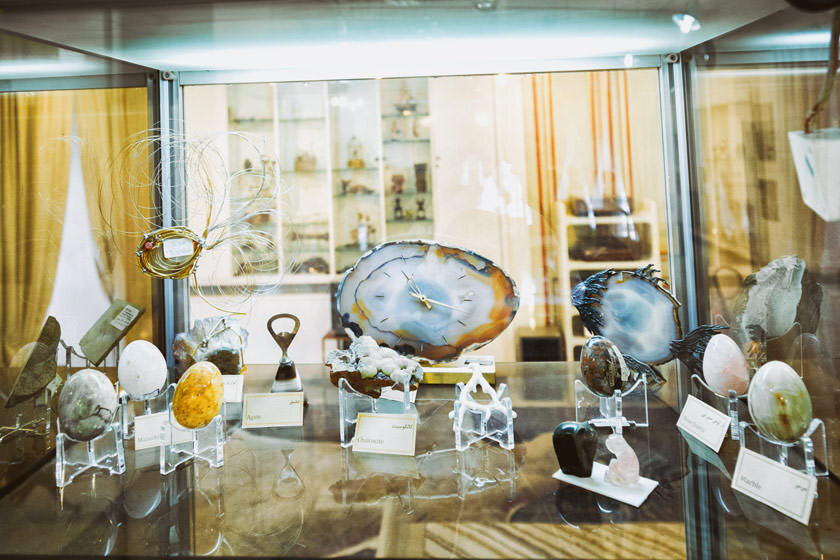Precious stones documented at Niavaran palace

TEHRAN – A team of Iranian cultural heritage experts has studied and documented tens of precious and semi-precious stones, which are being kept at Tehran’s Niavaran Cultural-Historical Complex.
Some 106 precious and semi-precious stones along with a number of fossils from Ahmad Shahi Pavilion Museum were studied, categorized, and documented, said Iraj Beheshti, who presided over the project, CHTN reported on Tuesday.
Among the studied stones are rough quartz rocks with different colors, as well as minerals such as pyrite, chalcopyrite, stibnite, sulfur, and a variety of fish fossils, ammonites, and trilobites, he added.
Covering an area of about eleven hectares, Niavaran Cultural-Historical Complex is composed of several landmark buildings, museums, and monuments constructed in the 19th and 20th centuries during the Pahlavi and late Qajar eras. The history of the palace complex stretches back to about 280 years ago when Fath-Ali Shah of the Qajar Dynasty ordered a summer residence to be built over the then countryside area of the capital. The two-story Ahmad Shahi Pavilion is one of the highlights of the complex.
ABU/AM
Leave a Comment